Last Updated on May 30, 2025 by Packoi Team
Sustainable packaging minimizes environmental harm and presents numerous benefits for businesses and consumers.
The article explores effective ways to reduce carbon footprints using sustainable packaging solutions. Whether you are a small business owner or a large corporation, these strategies provide actionable steps to make a positive environmental impact. Reducing carbon footprints should be at the forefront of every business goal.
There is a need to take note of global warming and climate change concerns and draw strategies to reduce emissions.
Carbon Footprint and Its Impacts
1. What Is Carbon Footprint?
Carbon footprint is the amount of greenhouse gas emissions, particularly carbon dioxide (CO2), released into the atmosphere from business activities. Therefore, the global carbon footprint measures the impact of organizations or products on climate change.
It encompasses direct emissions, including those from burning fossil fuels, and indirect emissions, like producing and transporting goods and services.
2. The Link Between Carbon Emissions and Global Warming
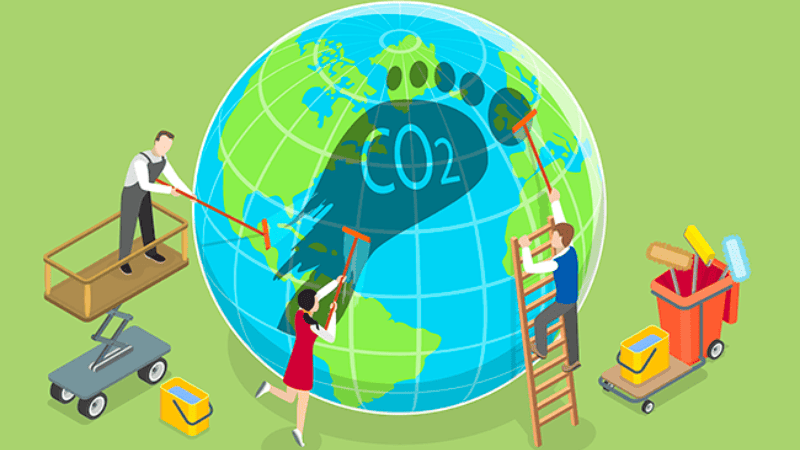
The carbon footprint from greenhouse gas emissions contributes to the greenhouse effect by trapping heat in the atmosphere. Excessive heat accumulation leads to global warming and subsequent climate change.
Global temperature rise is associated with adverse effects, including frequent and severe weather events, rising sea levels, loss of biodiversity, and disrupted ecosystems. Reducing our carbon footprint is crucial for mitigating these impacts and preserving the natural environment.
3. The Significance of Reducing Carbon Footprint in Packaging
Packaging contributes to the overall global greenhouse gas emissions. Packaging materials’ production, transportation, and disposal utilize energy often derived from fossil fuels.
This results in carbon dioxide emissions and other harmful greenhouse gas emissions. By adopting sustainable packaging solutions, companies can reduce the carbon footprint from packaging.
This helps mitigate climate change, promotes resource efficiency, reduces waste, and leads to a healthier environment. Moreover, businesses that prioritize sustainable packaging demonstrate their commitment to environmental responsibility.
In this way, they enhance their reputation, attract environmentally conscious consumers, and drive innovation.
Ready to Get Custom Packaging for Your Business?
start with a low minimum order quantity
Here are ten ways you can reduce your carbon footprint and fossil fuel use in your business. All of them are effective, and you can try them!
Method 1: Use Biodegradable and Compostable Materials
Businesses can design packaging using biodegradable and compostable materials to reduce carbon emissions and overall carbon footprint. These materials break down naturally in the environment, minimizing waste and reducing greenhouse gas emissions. Here are three options to consider:
- Plant-Based Materials
Plant-based materials, such as polylactic acid (PLA) and polyhydroxyalkanoates (PHA), offer sustainable alternatives to plastics. PLA is derived from renewable resources like cornstarch or sugarcane. On the other hand, PHA is produced by bacteria feeding on plant sugars.
Unlike petroleum-based plastics, PLA and PHA are biodegradable and compostable, resulting in lower carbon emissions.
- Paper and Cardboard Options
Paper and cardboard packaging are eco-friendly to reduce global greenhouse gas emissions. The materials come from renewable resources, making them biodegradable and recyclable. By choosing sustainable paper products, you can minimize the carbon footprint associated with packaging.
Using recycled paper and cardboard also reduces the demand for virgin materials, further conserving the environment.
- Mushroom-Based Packaging

Mushroom-based packaging is an innovative and sustainable packaging solution. It involves using the mycelium from mushrooms to grow around agricultural waste or other organic materials. This forms a durable and biodegradable packaging material.
Mushroom packaging has gained popularity due to its low carbon footprint. It requires fewer resources and energy compared to traditional packaging materials.
Biodegradable and compostable materials like plant-based plastics, paper, cardboard, and mushroom-based packaging can significantly reduce the carbon footprint. With minimal carbon dioxide emissions, they contribute to a more sustainable future.
Method 2: Embrace Reusable Packaging
Another effective approach to reducing your carbon footprint is by embracing reusable packaging solutions. Shifting away from single-use packages and adopting reusable alternatives minimizes waste and increases energy efficiency. Here are some ways to incorporate reusable packaging:
- Reusable Containers and Bags

Encouraging the use of reusable containers and bags significantly reduces the packaging’s environmental impact. So, replace single-use plastic bags with durable, reusable ones made from materials like cloth or recycled plastic. Similarly, promote the use of reusable containers for food and beverage packaging.
These containers are made from materials like glass, stainless steel, or durable plastics. They are washed and reused multiple times, ensuring that you reduce your carbon footprint and food waste.
- Refillable Packaging Systems
Another way to reduce your carbon footprint is by implementing refillable packaging systems. It is a sustainable solution that minimizes packaging waste. Instead of purchasing products in single-use packaging, consumers refill existing containers.
The approach is seen in bulk stores or with products like cleaning supplies, personal care items, or beverages. By using refillable packaging, you reduce carbon dioxide emissions from packaging materials. In this way, you reduce your carbon footprint from packaging production, transportation, and disposal.

- Encouraging a Circular Economy
Embracing the circular economy model promotes the reuse and recycling of packaging materials. Encourage customers to return packaging, like bottles or containers, for proper recycling or reuse.
Collaborate with recycling initiatives and organizations to ensure that packaging materials are effectively recycled. Keeping materials within the production cycle reduces the need for new packaging and reduces your carbon footprint.
Embracing reusable packaging options, implementing refillable systems, and fostering a circular economy can significantly reduce your carbon footprint. These approaches reduce food waste, save energy, and promote sustainable consumer habits. This leads to a more environmentally conscious society.
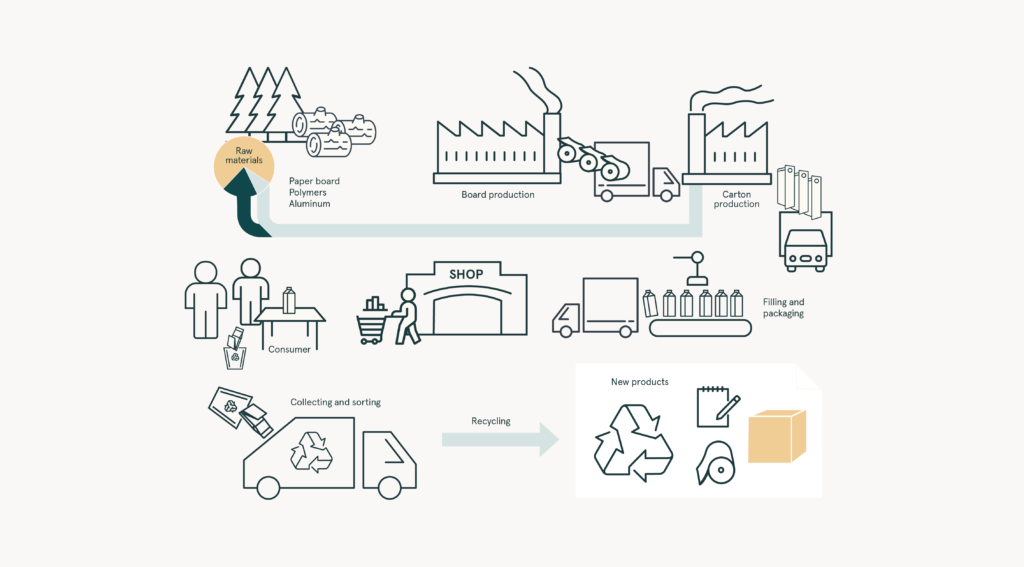
Method 3: Use Post-Consumer Recycled (PCR) Content
Utilizing post-consumer recycled (PCR) content in packaging materials is a strategy to reduce your carbon footprint. PCR content is materials recycled from products that were previously used and discarded.
Incorporating PCR content into packaging contributes to a circular economy and reduces the demand for new materials. Below are some ways to implement this approach in your business.
- Select Packaging Materials with PCR Content
When choosing packaging materials, opt for those containing a significant amount of PCR content. This includes plastics, paper, cardboard, or glass. Look for packaging options labeled as “recycled” or “made with post-consumer recycled content.” This ensures that you are choosing environmentally friendly options.
- Collaborate with Suppliers and Manufacturers
Engage with suppliers and manufacturers offering packaging materials with high PCR content. Communicate your commitment to sustainability and prioritize sourcing materials that align with your goals. Collaborate with stakeholders to get materials that reduce your carbon footprint.
- Communicate the Use of PCR Content
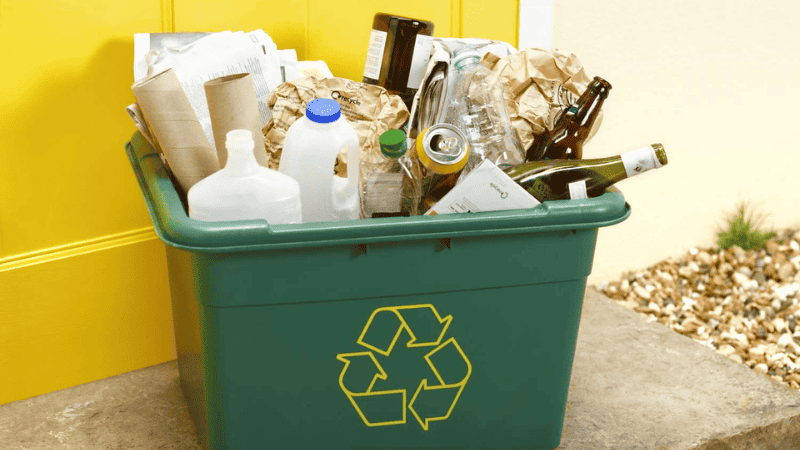
Always highlight the use of PCR content in your packaging to educate and engage consumers. By sharing the information on product labels, you raise awareness about the environmental benefits, encouraging sustainable consumer choices. Transparent communication also enhances the brand’s reputation.
- Support Recycling Infrastructure
As a business, support, and advocate for improved recycling infrastructure. This includes partnering with recycling programs and educating consumers about recycling practices. By increasing the availability and accessibility of recycling facilities, more packaging materials can be effectively recycled and transformed into PCR content.
Through PCR content inclusion in your packaging, you reduce waste, conserve resources, and lower carbon emissions. It demonstrates your commitment to sustainability and helps drive the demand for recycled content. This creates a positive impact on the environment and the packaging industry.
Ready to Get Custom Packaging for Your Business?
start with a low minimum order quantity
Method 4: Implement Sustainable Printing Techniques
Implementing sustainable printing techniques is an important step to reduce your carbon footprint. You minimize resource consumption and waste by adopting environmentally friendly practices and technologies. Below are key considerations for implementing sustainable printing techniques.
- Utilize environmentally friendly inks

Replace traditional petroleum-based inks with eco-friendly alternatives like soy-based or water-based inks. Unlike conventional inks, soy-based inks come from a renewable resource and have lower VOC (volatile organic compound) emissions.
Water-based inks also have reduced environmental impact and offer better recyclability. Using these links reduces your carbon footprint and saves money.
Use Energy-Efficient Settings in Printing Processes
You can also opt for energy-saving printing equipment and technologies as a business. Look for certified printers or advanced technologies that use minimal energy. Implement energy-saving practices such as using LED UV curing systems.
Also, optimize printing layouts to minimize ink and energy usage. Reducing energy consumption during printing lowers your carbon emissions and saves money.
- Reducing Waste During Printing and Production
Implement measures to minimize waste during the printing and production stages. Optimize print runs to avoid excessive overruns and ensure accurate quantities. Properly calibrate printing equipment to minimize color and registration errors, which can result in reprints and waste.
Additionally, promote paper waste reduction by printing on both sides of the paper or using digital proofs instead of physical ones. Recycling and responsibly disposing of waste materials are also important to ensure proper environmental management.
Implementing sustainable printing techniques like using eco-friendly inks, adopting energy-efficient processes, and reducing waste can significantly reduce your carbon emissions. These practices conserve resources, reduce pollution, and lead to a more sustainable printing industry.
Method 5: Opt for Eco-Friendly Packaging Fillers
Choosing eco-friendly packaging fillers effectively reduces your carbon footprint, minimizing your business’s environmental harm. Packaging fillers protect products during transportation, and opting for sustainable options significantly reduces waste and resource consumption.
- Biodegradable and Recyclable Fillers
Replace traditional packaging fillers with biodegradable and recyclable alternatives, like Styrofoam peanuts or bubble wrap. For example, cornstarch-based packing peanuts are biodegradable and can be dissolved in water.
This eliminates waste and reduces environmental effects. Shredded paper or cardboard is also an eco-friendly filler. These materials are easily recyclable and can be composted.

- Reducing Filler Material Usage
Minimize the amount of filler material in packaging by opting for efficient designs and appropriate sizing. Fitting packaging eliminates the need for excessive fillers.
Additionally, using product-specific inserts or molded packaging solutions secures items without the need for additional fillers. Reducing filler material reduces waste generation and releases fewer greenhouse gas emissions.
- Avoiding Harmful Materials Like Styrofoam
Avoid using environmentally harmful materials like Styrofoam in packaging. Styrofoam is non-biodegradable, difficult to recycle, and contributes to pollution. Instead, choose sustainable alternatives with minimal environmental impact.
Look for packaging fillers made from recycled materials or ones that are biodegradable, compostable, or recyclable.
Opting for eco-friendly packaging fillers significantly reduces waste, promotes recycling, and decreases your carbon footprint. These choices benefit the environment, demonstrate your commitment to sustainability, and show your responsible packaging practices.
Method 6: Implementing Energy-Efficient Practices
Implementing energy-efficient practices in your packaging operations can significantly reduce your carbon footprint. By optimizing energy usage and exploring renewable energy, you lower greenhouse gas emissions and contribute to a sustainable future. Here are the top ways to consider this aspect.
- Utilizing Energy-Efficient Machinery and Equipment
As a business owner, invest in energy-efficient machinery and equipment for your packaging operations. Look for equipment that is certified or designed to minimize energy use. For example, choose packaging machines with energy-saving features like automatic shut-off. Regularly maintain and upgrade equipment for optimal energy efficiency.

- Optimizing Production Processes to Minimize Energy Consumption
Analyze your packaging processes to identify areas where energy is reducible. Therefore, optimize production lines to minimize the distance products and materials need to travel, reducing energy expenditure.
You can also use energy-efficient lighting systems and motion sensors to ensure the lights are on when needed. Another strategy is implementing energy management systems that monitor and control energy use throughout your operations.
- Exploring Renewable Energy Sources for Packaging Operations
Consider integrating renewable energy into your packaging operations. This includes installing solar panels or wind turbines on your premises. This helps offset the energy consumed during packaging processes.
Alternatively, explore opportunities to purchase renewable energy from local providers and participate in renewable energy credit programs. Transitioning to renewable energy reduces your carbon footprint, making your business sustainable.
By implementing these practices, you reduce energy use and lower carbon emissions. These steps demonstrate the company’s commitment to sustainability, contributing to a more environmentally friendly packaging industry.
Method 7: Reducing Material Waste

Reducing material waste, such as food waste, is crucial in minimizing your carbon footprint in packaging. The strategies include employing efficient inventory management, implementing recycling programs, and exploring lightweight packaging options.
These techniques significantly decrease waste generation and promote sustainable practices. Here are some of the top strategies that can minimize your waste output.
- Employing Efficient Inventory Management
As a business owner, you should implement efficient inventory management practices to minimize excess packaging materials. Always conduct regular audits to assess your packaging needs and adjust the inventory accordingly.
When you accurately forecast and track demand, you avoid storing excess packaging materials, reducing waste. Additionally, consider collaborating with suppliers for just-in-time delivery options that optimize inventory levels.
- Implementing Recycling Programs
You can also establish recycling programs that encourage proper recycling practices among employees. Set up designated recycling stations for packaging materials like cardboard, paper, plastic, and metal. Also, you should communicate recycling guidelines and provide educational resources to ensure materials are sorted correctly.
Another approach is to partner with local recycling facilities or organizations to ensure that collected materials are effectively recycled.
- Exploring Lightweight Packaging Options
When designing packaging, evaluate your packaging designs and explore lightweight alternatives that offer adequate protection. Lightweight packaging reduces material usage, transportation costs, and carbon emissions.
Also, consider using thinner films and innovative materials or redesigning packaging structures to optimize material efficiency without compromising safety.
You can significantly reduce material waste and carbon emissions by employing efficient inventory management, implementing recycling programs, and exploring lightweight packaging options.
These practices contribute to a more circular economy and demonstrate your commitment to sustainability and responsible resource management.
Ready to Get Custom Packaging for Your Business?
start with a low minimum order quantity
Method 8: Monitor and Improve Packaging Sustainability
Monitoring and improving packaging sustainability is essential for continuously reducing your carbon footprint. You can further enhance your packaging practices by embracing minimalist design principles, implementing eco-friendly alternatives, and optimizing package size and shape.
Here are some top strategies to consider for this method.
- Embracing Minimalist Design Principles
As a business owner, adopt minimalist design principles to reduce material consumption. The minimalist approach simplifies packaging designs by eliminating unnecessary layers, inserts, or embellishments.
You can also opt for sleek and efficient designs, prioritizing functionality over material usage. Streamlining packaging can reduce waste and lower the carbon emissions associated with production and disposal.
- Implementing Eco-Friendly Alternatives

You can also integrate eco-friendly alternatives, such as using biodegradable or compostable materials with a lower environmental impact. This includes exploring plant-based plastics, bio-based films, or compostable packaging options.
These alternatives break down naturally, reducing waste accumulation and carbon emissions. Ensure the chosen materials optimize product protection and quality.
- Optimizing Package Size and Shape
Optimizing package size and shape is essential to reducing transportation space and fuel consumption. As the business owner, evaluate the packaging dimensions and identify opportunities for downsizing. Smaller packages take up less space during transportation, allowing for efficient use of vehicle spaces and reducing carbon emissions.
Besides, consider using flexible packaging options that conform to the product’s shape, optimizing space utilization.
With these strategies, you can further reduce your carbon footprint. These strategies promote resource efficiency and waste reduction, creating a more sustainable packaging industry. Constantly assess your packaging practices to identify areas for improvement.
Method 9: Streamlining Supply Chain Logistics
Another vital approach to addressing carbon emissions is streamlining supply chain logistics. Notably, by optimizing transportation routes and modes, consolidating shipments, and implementing effective reverse logistics, you can minimize greenhouse gas emissions and promote sustainable practices.
Here are the leading techniques to help you stand out with this approach.
- Optimizing Transportation Routes and Modes
Constantly evaluate the transportation routes and identify opportunities for reducing greenhouse gas emissions. You must consider factors like distance, traffic patterns, and fuel efficiency.
Another approach is to explore alternative transportation modes, such as rail or sea freight, which are more fuel-efficient than vehicles. Always utilize route planning software and real-time data to optimize your sustainability and improve transportation efficiency.

- Consolidating Shipments
The business can also consolidate shipments to reduce the number of vehicles and minimize emissions. You must coordinate with suppliers and customers to combine smaller shipments into larger, more efficient loads. This reduces transportation costs and maximizes vehicle capacity, lowering carbon emissions.
- Implementing Effective Reverse Logistics
You can also develop and implement effective reverse logistics processes to return and reuse packaging materials. As a business, establish systems for collecting and refurbishing packaging, reducing the need for new packaging materials.
It also minimizes waste generation. This can be achieved by collaborating with customers, suppliers, and recycling partners to ensure a smooth flow of returned packaging and adequately recycle or reuse materials.
Streamlining supply chain logistics reduces the carbon footprint. The strategies reduce greenhouse gas emissions, save costs, and promote sustainability and efficiency in the supply chain.
Method 10: Collaboration and Education
The final technique is collaboration and education, which are vital in reducing the carbon footprint associated with packaging. As a business, advocate for sustainability across the supply chain and collaborate with green supply chain partners.
You can also educate employees and customers, fostering a culture of environmental responsibility that drives positive change. Here are some of the leading techniques for this method.
- Advocating for Sustainability Across the Supply Chain
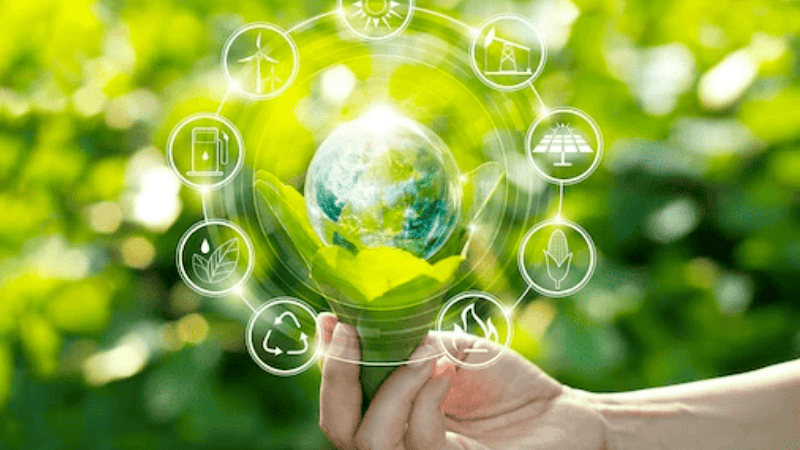
As a business owner, engage with suppliers, manufacturers, and other stakeholders to advocate for sustainability practices. You must encourage people to adopt eco-friendly packaging solutions. Moreover, be at the forefront of implementing energy-efficient processes and reducing waste.
Ensure you share information on the benefits of sustainable packaging and collaborate on finding innovative solutions.
- Collaborate With Green Supply Chain Partners
It is also essential to seek out and collaborate with green supply chain partners. This demonstrates your commitment to sustainability. Always look for suppliers, manufacturers, and logistics providers who prioritize eco-friendly practices.
You can leverage collective expertise and resources to drive sustainable packaging solutions by partnering with like-minded organizations.
- Educating Employees and Customers
Finally, raising awareness and educating employees and customers about the importance of sustainable packaging is crucial. As the business owner, conduct training sessions to educate workers on sustainable practices, recycling guidelines, and the benefits of eco-friendly packaging.
You should also encourage workers to actively participate in waste reduction and recycling efforts. Within your business, provide clear and accessible information to customers about sustainability initiatives. These initiatives include the use of recycled materials or the carbon footprint of your packaging.
Through collaboration, you create a stakeholder network committed to reducing the carbon footprint. This collaborative approach fosters innovation, knowledge-sharing, and collective action toward a more sustainable future.
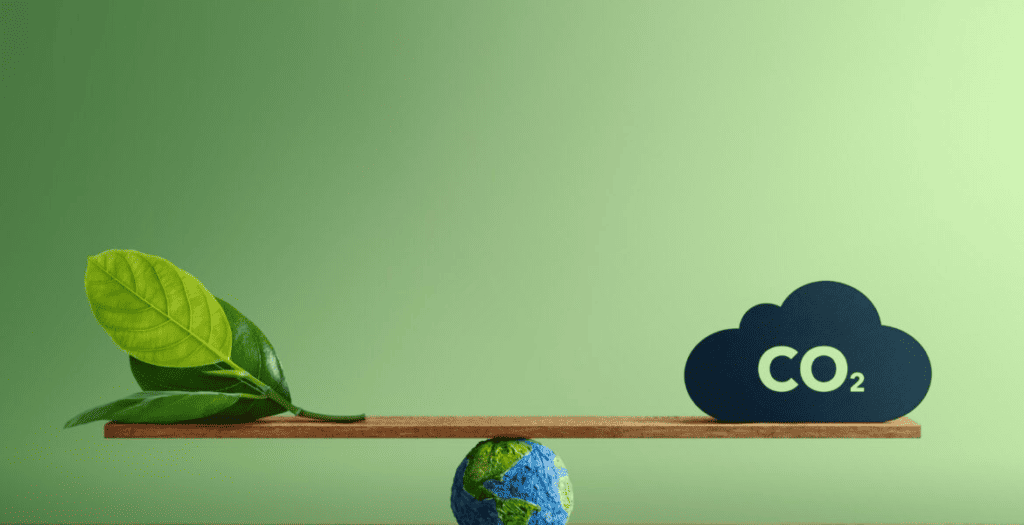
Conclusion
Packaging is one of the areas where businesses can reduce their carbon footprints and focus on carbon offset techniques. As a business owner, always look for opportunities to design reusable packaging. For example, a water company can make a reusable water bottle.
The business can also use organic waste to generate energy. Relying on sustainable suppliers can also improve the benefits gained from sustainable packaging.
Get Sustainable Packaging Solutions Now!
Looking for a reliable packaging provider? Packoi is always committed to offering sustainable packaging solutions to businesses. We provide unique designs that can make you stand out from competitors. Contact us today to get a demo or quote on our services. Our packaging design services are the best you can get.




